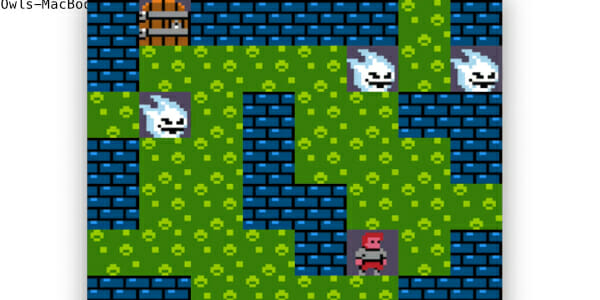C++ is a highly versatile and powerful programming language, widely used for various applications, including game development. One of the most popular libraries for creating games in C++ is SFML (Simple and Fast Multimedia Library). In this article, we will explore some of the best C++ SFML tutorials and learning resources to help you master this powerful combination of language and library. Whether you are a beginner or an experienced developer, these resources will help you gain new skills and enhance your game development journey.
Table of contents
What is SFML?
SFML is a portable and efficient multimedia library written in C++ that supports the creation of 2D graphics, audio playback and capture, window management, and user input handling. It is designed to be easy to use for all levels of programmers while giving them the power and versatility to build a variety of applications.
Why SFML is useful for C++ programs
SFML is a vital tool for C++ programmers for several reasons:
- It is lightweight, efficient, and cross-platform, ensuring your apps and games run smoothly on various devices and operating systems.
- It allows programmers to focus on the game or application logic instead of delving into lower-level APIs or the complexities of graphics and multimedia programming.
- As an open-source library, it encourages community involvement and contribution, ensuring continued development and improvement.
What kinds of programs and games can be built with SFML?
With SFML, C++ programmers can create myriad applications, such as:
- 2D games with rich graphics, animations, and sound effects
- Audio players and visualizers
- Emulators and virtual machines
- Graphical user interfaces for a variety of applications
Why should you learn SFML as a C++ programmer?
Learning SFML has several benefits for C++ programmers:
- It broadens your skill set and opens up new opportunities for creating exciting and engaging applications and games.
- It refines your understanding of multimedia programming and provides a solid foundation for further learning with other libraries and frameworks.
- Mastering SFML enhances your portfolio and could potentially unlock new career opportunities in the gaming and software development industries.
Below is a list of the best learning resources for mastering SFML with C++, featuring both Zenva and other sources. Make sure to check them out and take the first step towards enriching your C++ programming repertoire.
Need to explore more C++ topics? Try out our sizeable collection of articles on the topic!
Zenva’s C++ Programming Academy
If you’re just starting with C++ and SFML, Zenva’s C++ Programming Academy is a beginner-friendly resource that offers courses for beginners and intermediate learners. The curriculum includes C++ basics, program flow, object-oriented programming, memory management, text-based games, enemies and battle mechanics, 2D games with SFML, graphics and audio with SFML, clicker games, and rogue-like games. The courses provide a solid understanding of the concepts behind coding and are taught by qualified coders who have been certified for their programming and teaching skills.
GameDev Academy’s C++ Beginner’s Tutorial
GameDev Academy’s C++ Beginner’s Tutorial is a great place to start for anyone new to C++ or looking to brush up on their skills. This article covers the basics of C++, such as variables, data types, operators, expressions, control flow statements, functions, pointers, arrays and strings, structures and classes, and file handling. The tutorial includes code examples and explanations of each concept to help beginners master the principles of C++ and apply them to real-world applications.
SFML 2.5 Tutorials
The SFML 2.5 Tutorials are a collection of tutorials for the SFML 2.5 library, a multimedia library for C++. The tutorials cover various topics, such as window management, events, keyboard, mouse, and joysticks, using OpenGL for graphics, drawing 2D objects, sprites, textures, text, shapes, designing entities with vertex arrays, adding special effects with shaders, controlling the camera with views, playing sounds and music, recording audio, custom audio streams, and using sockets for communication and web requests.

GameFromScratch’s SFML with C++ Tutorial Series
GameFromScratch’s SFML with C++ Tutorial Series focuses on creating a basic SFML application, implementing the game loop, and tracking time. The tutorial explains how to implement a game loop and handle events such as mouse and keyboard actions or window resizing. It also covers the concept of time and how to track elapsed time per frame using the sf::Clock.
SonarSystems’ SFML-Box2D Tutorials on GitHub
The SonarSystems/SFML-Box2D-Tutorials repository on GitHub is a collection of tutorials on using SFML and Box2D libraries in game development. The tutorials cover topics such as setting up Windows and Visual Studio or Mac OS X and Xcode, creating shapes, sprites, and textures, handling events, transforming objects using input, and collision detection. The repository includes code samples and templates for each tutorial, as well as instructions on how to use them.
SFML Resources Wrap-Up
In conclusion, there are numerous resources available for learning C++ and SFML, catering to different levels of experience and expertise. Whether you’re new to programming or an experienced developer looking to expand your skills, these tutorials and resources will help you excel in the world of game development. Don’t forget to check out Zenva’s C++ Programming Academy to get started on your journey to mastering C++ and SFML.
Did you come across any errors in this tutorial? Please let us know by completing this form and we’ll look into it!

FINAL DAYS: Unlock coding courses in Unity, Godot, Unreal, Python and more.







